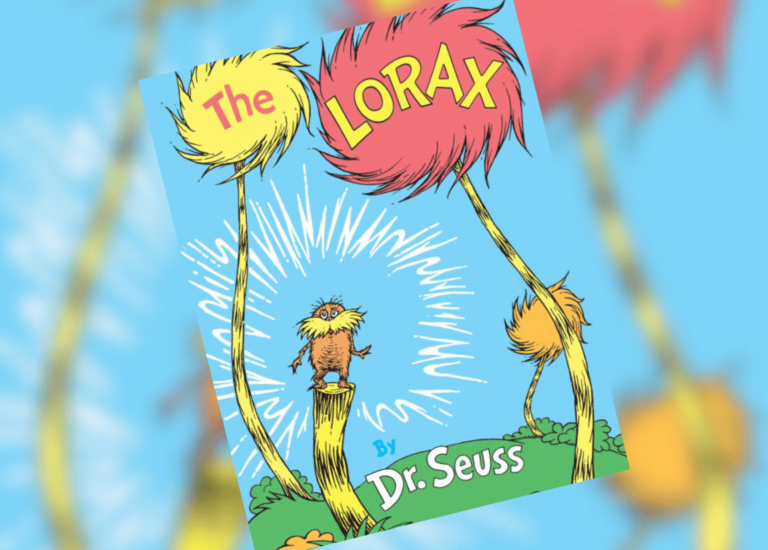Book Review of The Lorax
The Children’s Book Review

What to Expect: Story in Verse, Classic, and Environmental
In an era when environmental consciousness was just beginning to emerge in mainstream discourse, Dr. Seuss crafted what would become one of the most powerful and enduring environmental parables in children’s literature. The Lorax, published in 1971, demonstrates Seuss’s remarkable ability to address complex social issues through the lens of whimsical storytelling, creating a work that remains startlingly relevant over fifty years later.
Through the recollections of the mysterious Once-ler, readers learn about the transformation of a pristine paradise into an industrial wasteland. As the tale unfolds in Seuss’s signature rhyming verse, beneath the playful language, a sobering message about environmental stewardship and corporate responsibility is revealed. The narrative uses a retrospective story-within-a-story structure that allows young readers to witness both cause and effect.
The titular character, the Lorax, serves as nature’s advocate, “speaking for the trees” with increasing urgency as the environment deteriorates. His repeated warnings and eventual departure are effective metaphors for humanity’s relationship with nature.
In the final scene involving the last Truffala seed, restoration becomes a possibility, but it’s clearly dependent on active care and intervention from the next generation. This ending transforms the story from a mere cautionary tale into a call for environmental stewardship, striking a delicate balance between acknowledging the severity of ecological damage and offering hope for the future.
What sets The Lorax apart from mere moral preaching is its nuanced portrayal of environmental degradation as a gradual process driven by complex motivations. The Once-ler isn’t portrayed as cartoonishly evil but as a businessman whose initial small-scale enterprise spirals into destructive industrialization—this complexity makes the story’s message more powerful and relatable, showing how good intentions can lead to devastating consequences when unchecked by ethical considerations.
Suess’s illustrations are particularly effective in conveying the story’s environmental message. The progression of environmental decline from the first Truffula Tree being cut to the final devastation of the landscape and the contrast between the vibrant, colorful paradise of the undisturbed valley and the grim, gray industrial landscape that replaces it creates an immediate emotional impact.
The Lorax has proven farseeing in its warnings about unchecked industrialization, deforestation, and pollution. Its themes resonate even more strongly today amid continual concerns about climate change and environmental degradation. From an educational standpoint, The Lorax is an excellent introduction to environmental concepts for young readers. It presents complex ideas about sustainability, corporate responsibility, and ecosystem interconnectedness in an accessible format that encourages discussion between children and adults.
The Lorax is one of Dr. Seuss’s most important works, successfully balancing entertainment with education and moral guidance—its ability to convey complex environmental concepts through engaging storytelling makes it not just a classic of children’s literature but an enduring work of environmental advocacy that speaks to readers of all ages.
Buy the Book
About the Creator
Theodor Seuss Geisel—aka Dr. Seuss—is one of the most beloved children’s book authors of all time. From The Cat in the Hat to Oh, the Places You’ll Go!, his iconic characters, stories, and art style have been a lasting influence on generations of children and adults. The books he wrote and illustrated under the name Dr. Seuss (and others that he wrote but did not illustrate, including some under the pseudonyms Theo. LeSieg and Rosetta Stone) have been translated into 45 languages. Hundreds of millions of copies have found their way into homes and hearts around the world.
Dr. Seuss’s long list of awards includes Caldecott Honors, the Pulitzer Prize, and eight honorary doctorates. Works based on his original stories have won three Oscars, three Emmys, three Grammys, and a Peabody.

*Disclosure: Please note that this post may contain affiliate links that share some commission. Rest assured that these will not affect the cost of any products and services promoted here. Our team always provides their authentic opinion in all content published on this site.



